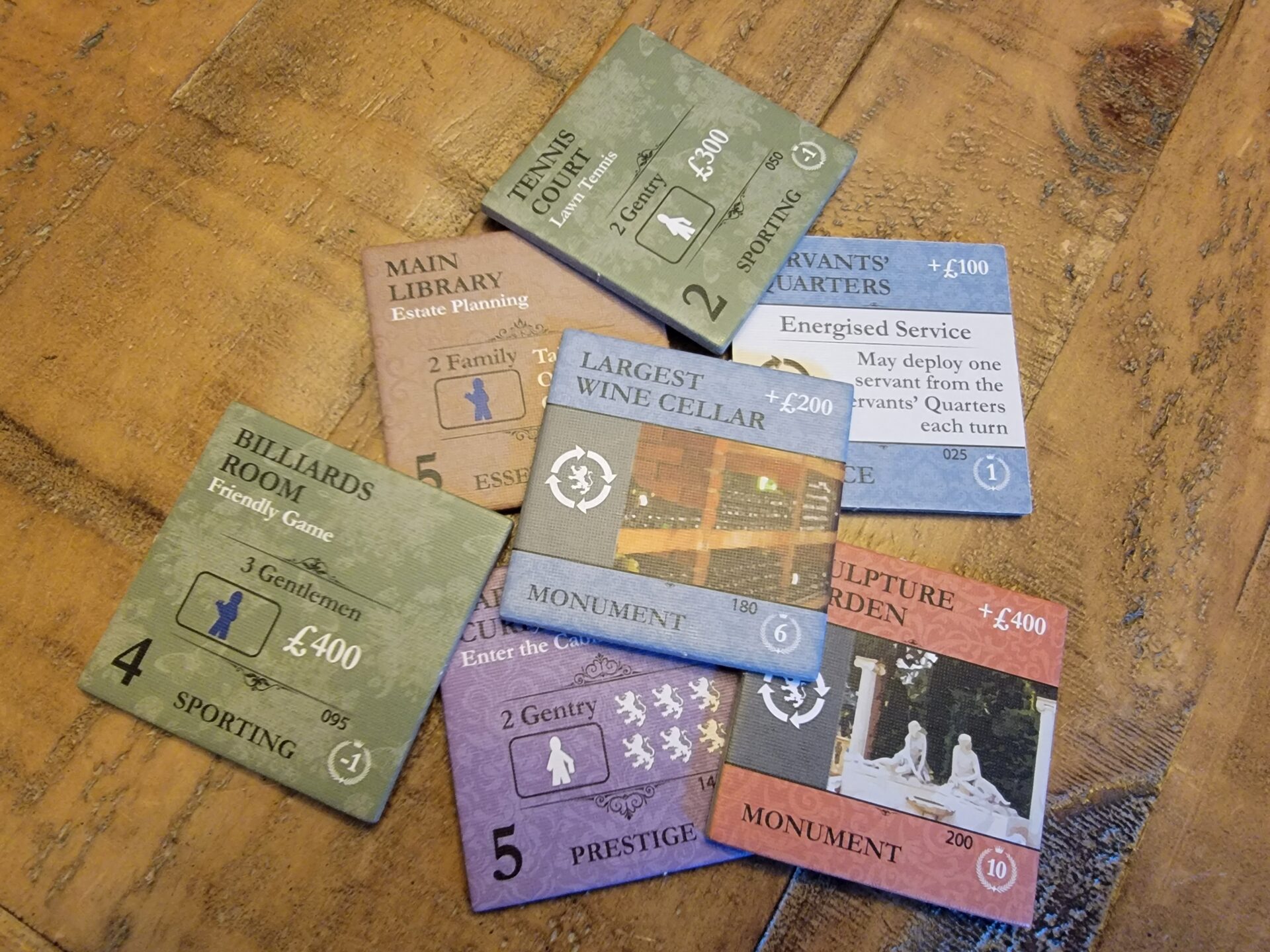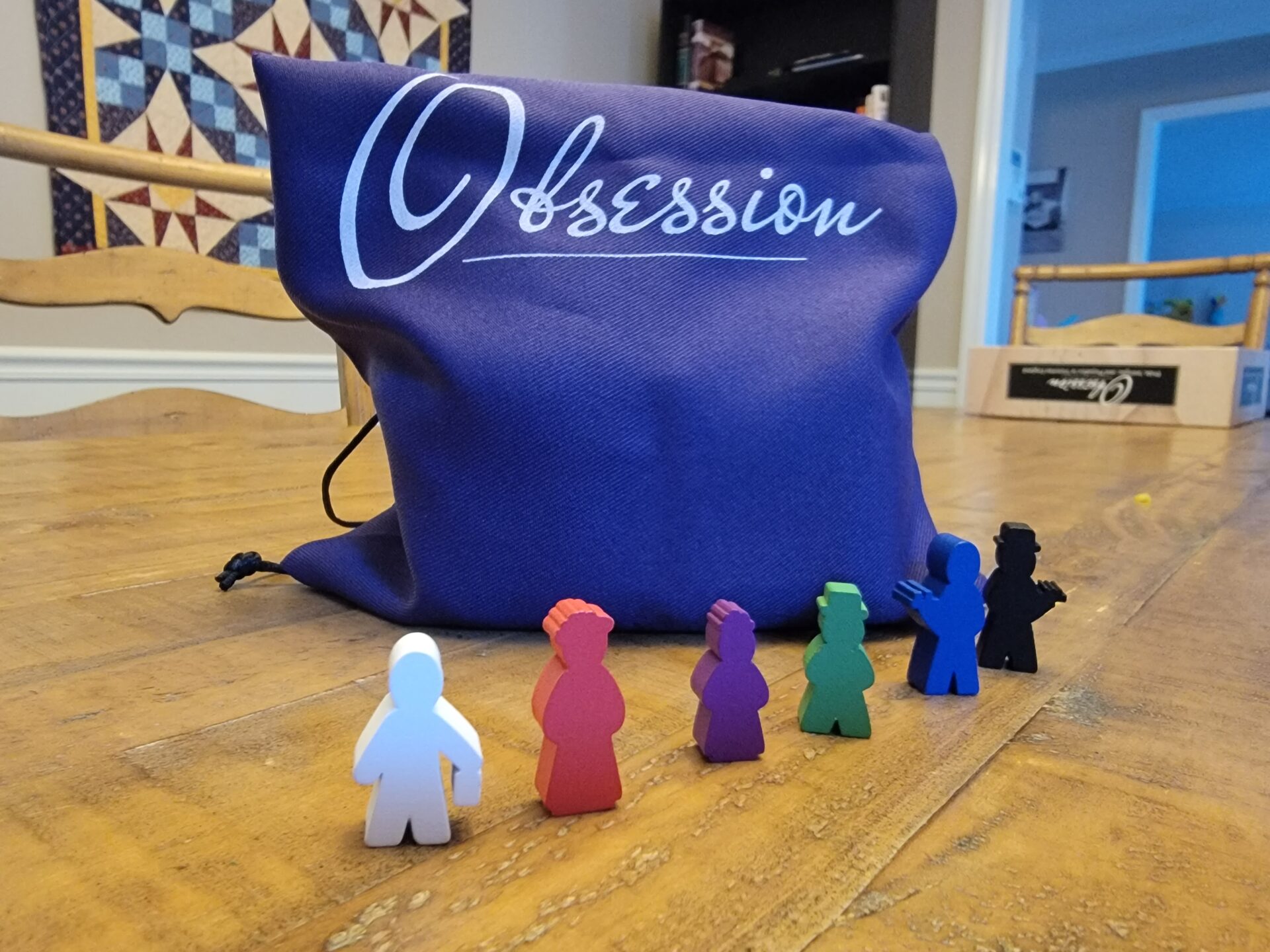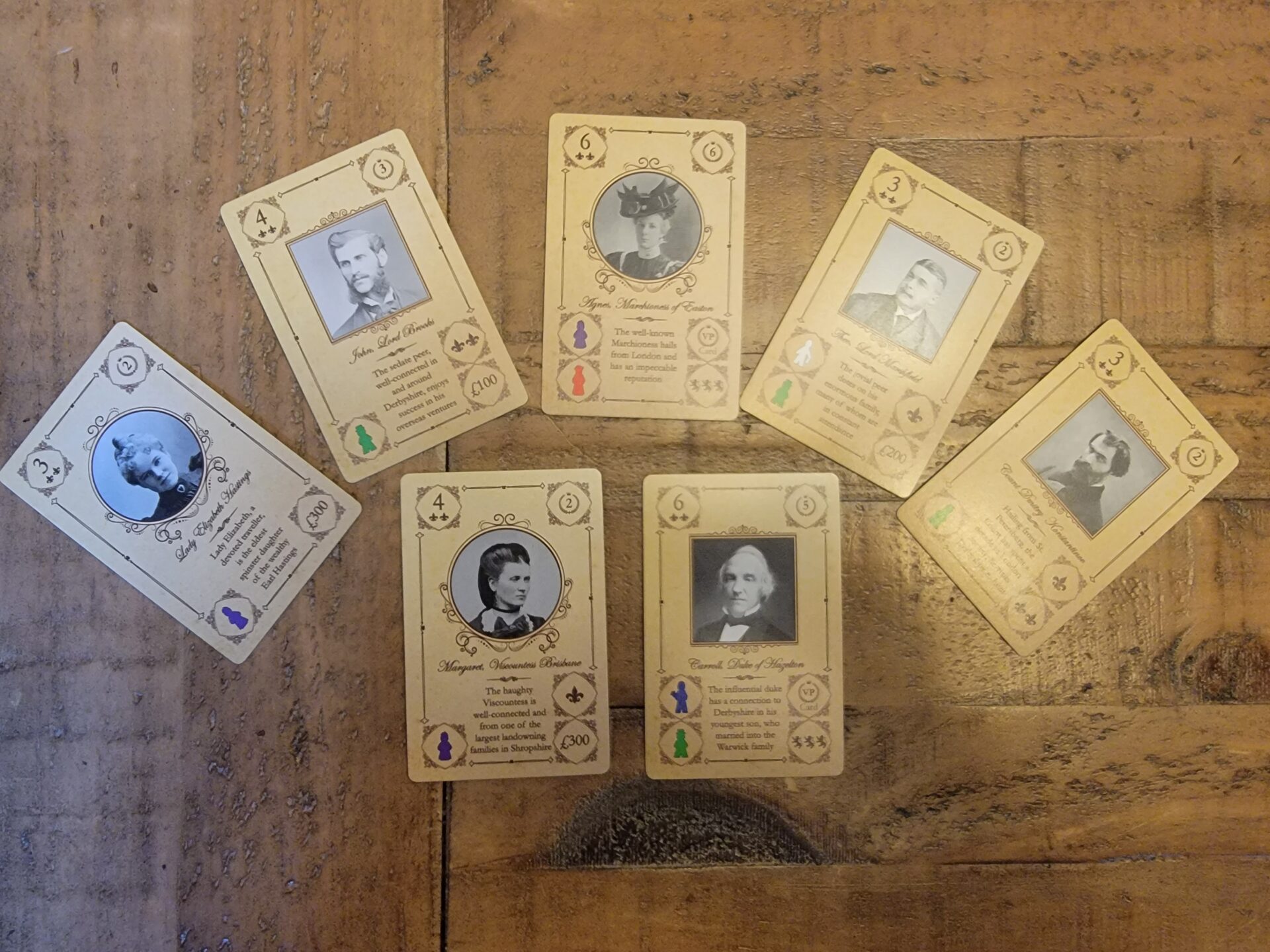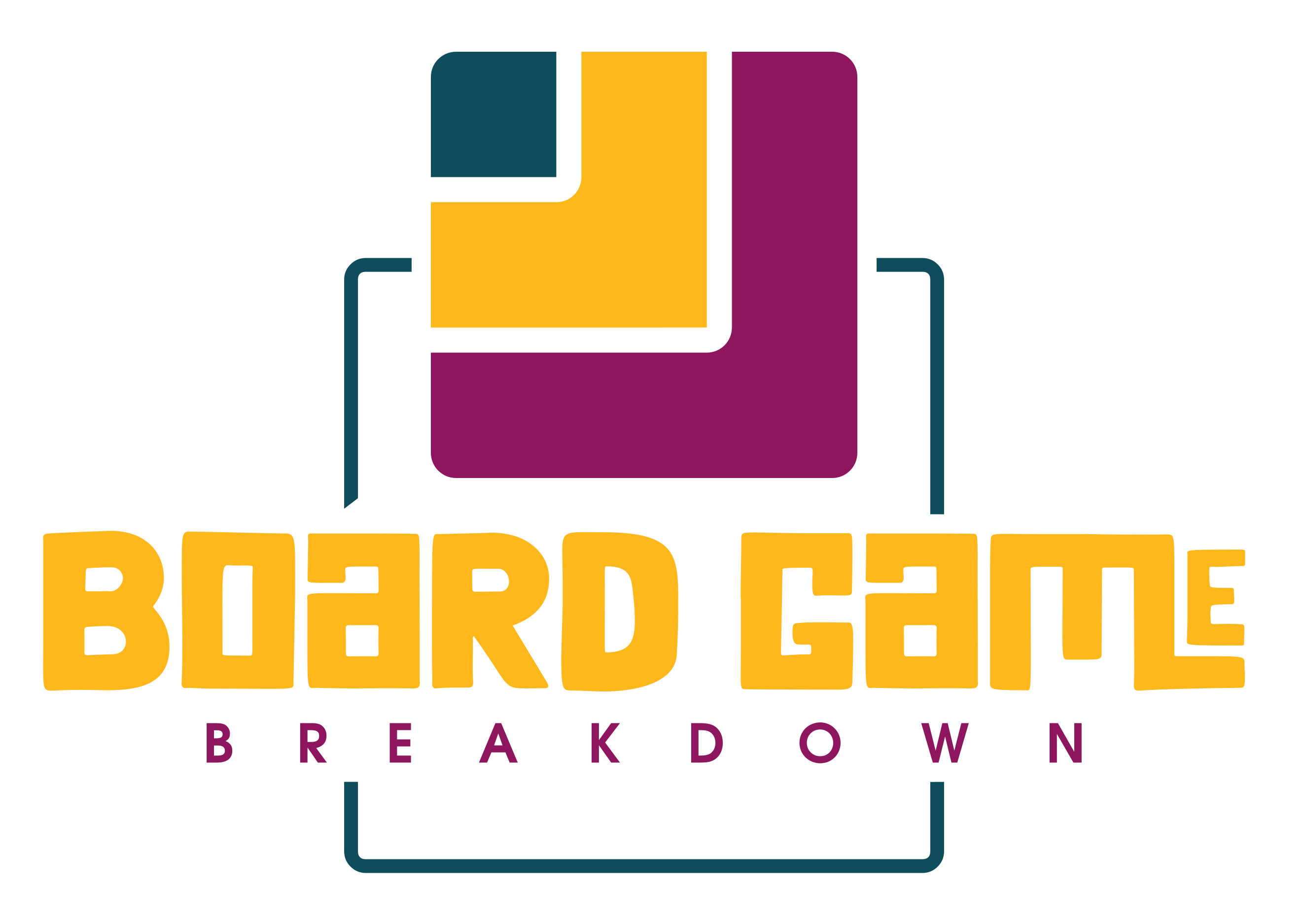
Name: Obsession
Year of Release: 2018
Player Count: 1 – 4 Players
Playing Time: 30 – 90 minutes
Designer: Dan Hallagan
Publisher: Keyenta Games
Primary Mechanisms: Worker Placement, Open Drafting, Deck Building
Weight (According to boardgamegeek.com): 3.14
Overview
Obsession has been one of those games eluding me for years now. I see it mentioned a lot on different board game themed sites and it routinely gets nominated to the Annual Geek Madness voting bracket on boardgamegeek.com. I have never encountered a game with such seemingly popularity that I just can’t get my hands upon. This all changed a few months ago when I was talking to a couple at work who regularly play board games. The wife mentioned that a new game just came in that she had to order internationally, and she was excited because it contained a theme that was very “Downton Abbey-esque.” My ears perked up. “Are you talking about Obsession?!” I blurted out and thankfully the answer was yes.
Fast forward about two months, and I find out that this couple has yet to play the game, not even punching out the pieces yet! Oh, the horror! But since they are such wonderful people, they said, “Hey, why don’t you take it home for a few weeks and give it a whirl.” They did this for two reasons: 1.) they both have admitted to being skimmers of rulebooks so maybe I can do the heavy lifting (which there is a lot of when it comes to the rulebook but I’ll discuss that shortly) and teach it to them and 2.) so I will shut the hell up about asking them every week if they played it since I needed to live vicariously through them. I have had the game a few weeks now and have played it both as a solitaire game and a few times at 2-players and without a doubt, I will purchase this game as soon as it is reprinted and back in stock. If you ever found yourself sitting on your couch, rooting for Mr. Bates and Anna, or marveling at how Mr. Carson keeps the house running, or just smirking at the snide remarks made each episode by the Dowager Countess of Grantham, you will fall in love with the theme of Obsession. But is everything about the game perfect and served on a silver platter? Read on to find out!
Rulebook & (Lack of) Insert
We are going to jump right in and get the bad out of the way. Something about the rulebook is just daunting in this game. I have mentioned before in reviews, but I love reading rules. I love reading rules, I love thinking about rules, I love following rules. None of it is off limits. If it has to do with rules, I am all in. That was until I ran into this game. I would pick up the rulebook at night and start reading it and just be drained. I can’t quite put my finger on it, but it just never clicked. Maybe it was more of a mental block as the rulebook itself is 16 pages, but you also get a separate glossary that is a whopping 28 pages! There is a lot of text related to the theme of the game which might have created the disconnect. It might have been better to split the theme information off and had it be in a “companion” book that could have taken the place of the glossary. In this way, the rulebook could contain all the rule-specific information.
Eventually, I had time to set the game up and thought “certainly the rulebook will come into clearer focus now that the game is out in front of me.” Unfortunately, I ran into a huge brick wall. Huge because I kept stumbling on how an actual turn works. After re-reading it multiple times and even visiting the rules forum on boardgamegeek.com, it clicked. Do not worry, a turn isn’t even complicated but for me, there was just a missing connection between what was printed in the rulebook and what I needed to do on the table. This might totally be on me, and you might not have this experience at all. But if you do, visit my YouTube video here on a detailed look on how the setup and gameplay work.
The other negative I have is with the way everything is packaged into the box. There is no insert to hold everything, instead the player is given multiple sized inner cartons. Some of these are slightly larger than a deck of cards and have one of the playable family names printed on it (including the two families that are contained within one of the expansions.) You are also given two larger purple boxes and then a large purple draw-string bag that is used to draw tiles out of. There is no real direction on how to split up the components and pack them into the various boxes. I found a decent way that helps to speed up setup but half the time, I can’t get it all to fit back into the box without the lid resting slightly askew.
This could just be a “me” problem and not your experience, but these negatives are worth pointing out. And if you were really looking forward to this game and think “wow this is off to a rough start,” do not worry, there aren’t many more negatives as we move forward!
Components

I have stated it before in reviews, but I am a total sucker for 1.) unique artwork used on every card or tile and 2.) small details to the components that don’t change the overall design of the game but can change the feeling of the game. Obsession contains both criteria in spades, largely within the Gentry deck of cards. This deck of cards is made up of all the guests that can be invited to your estate’s varying activities. What I love about these cards is that every single one of them has a unique portrait, name, and flavor text. The thematic details do not end there though as each card gives the player a favour for playing it, and naturally these favours are thematically consistent with the type of gentry the card represents. An example would be one of the guests that is described as an American Heiress. For playing this card, the player might end up getting quite a few pounds, but they will also lose numerous reputation points, since no respectable British family of wealth would have anything to do with some no-mannered Americans.
While we are on the varied cards that come with this game, I do have to state that the tiny Victory Point and Courtship cards are just too small in my opinion. I understand that neither have to show too much information and while players are not constantly grabbing at them throughout play, they are just a pain to shuffle and stack up on the board. Thankfully, all the rest of the cards in play are normal size and are great quality-wise.
The tiles that function as Estate Improvements are color-coded for their specific category and I love how the designer was able to fit all of the required icons on them without any of them feeling too busy. I especially love how the Monument tiles stand out a little more with some added artwork that is not found on the tiles. As you might expect, the tiles are all thematically correct (as far as I can tell) and are consistent with the correct servant and type of gentry that would be invited to the specific activity listed on the tile.
Speaking of the servants, each servant is represented by a nice sized meeple with each different category of servant being depicted with a different shape and color. This is another one of those details that doesn’t impact the gameplay greatly, but I love seeing the Footman carrying the bag and it just makes using the servants plain fun.
Hands down, this is a nicely produced game with high quality components that only add to the fun in the game.
Setup & Gameplay

I would bet most people reading this review can think of a game they’ve encountered where the components and art were off the charts but when it came time to play… it just wasn’t fun. I’m glad to say that Obsession does not fall prey to this affliction though I do have a few nitpicky items to discuss.
First, while setup isn’t a bear when compared to other games I have played, the lack of an insert makes it a little unorganized. As I mentioned earlier, maybe this is just me, but I’ve played this game daily for at least two weeks now and I still don’t feel like I’m any faster at setting it up. Each time I feel that I am just fumbling around in the box for pieces.
I won’t go over every detail of setup (but if you are curious about the setup, please check our YouTube video here with step-by-step instructions on both the setup and gameplay) but the gist of it comes down to getting all the guest cards shuffled and into the correct piles, and then building the market of improvement tiles. The problem I have with the card portion is that there are non-prestigious guests and prestigious guests, both easily recognized so a player can keep them separate in clean-up no problem, but then there is a sub-set of non-prestigious guests that you need to have separated for setup. So, there is time spent going through one of the deck of cards to pull out the fifteen starter guests, then you deal two randomly to each player, then you have to shuffle the remainder back into the non-prestigious guest deck.
The same sort of thing is happening with the improvement tiles where there are certain starter tiles each player gets during setup, so it is best to keep these separate. Then, depending on the player count, you need to add a certain amount of monument tiles into the pool so these need to be separated too. The ones not picked, go into the box as they are not used in the current game. Then players draw out six tiles to build the beginning market, but these tiles have certain rules they have to follow, and if the tile you pull is not eligible, it goes back into the bag. Eventually, you will have six tiles that are all eligible and then you have to put them in ascending order based on the Tile Sorting Number.
Neither of these steps in setup are necessarily complicated, they just take some time and do not feel near as elegant or streamlined to me as the rest of the game does. Again, this is me being nitpicky because there really is a lot to love here but setting up this game is a bit of a hassle and takes a little of the fun out of it.
You know what isn’t a hassle though? The actual gameplay. It is about as streamlined as you can get while still making the player feel like they are making impactful decisions on every turn. The basis of the game is that each round you will choose one of your room tiles to host the activity printed on it. These activities differ from each other in a few key ways. First, there is a servant listed on each tile that must be available to host that activity. When you use servants, they become expended and typically take two more turns to become available again. Second, each tile has a number of guests and the type of guests you have to invite to the activity. These guests are represented by the gentry cards in your hand. The tile might call for two ladies to be invited so you are limited to playing only lady cards from your hand. Lastly, these activities each give you different favours. Some of them award you reputation, some award you money, and others award you the ability to pick up more guests to add to your hand.
Once you’ve picked your activity and ensured you have the correct servant, you invite the guests by playing the correct number of cards from your hand. Much like the tiles, these cards usually require a certain servant (or two) to be invited and then they award you with a favour for inviting them. They also have a number listed in the top left corner and you must make sure that this number is never larger than your current reputation value. Once you have played the cards and made sure you have the correct available servants, you resolve all favours on the room tile as well as the cards.
The last main action you take on your turn is to buy a tile from the market if you want. There are two main things to keep in mind when buying a tile. The first is the amount of money it costs. The six spots on the board for the tiles range from 300 pounds to 800 pounds but each tile might contain a cost reduction or cost increase to adjust the final cost of the tile. The second is the large number in the bottom left of the tile. While you can buy any tile at any time (barring you have the required finances), you can’t actually use the tile if this number is higher than the current reputation listed on your individual player board. This ensures that to use some of the more powerful improvement tiles, you always need to be increasing your reputation in the community.
Once this is done, you discard your cards to the discard pile, and move the room tile back into its spot in your tableau, turning it over to the flip side if it is the first time using it. Then the next player takes their turn and once that is done, the next round begins. You have probably realized by now that at some point, you will have exhausted all of your gentry cards and will have no more combinations to invite to your plethora of activities. A player can forego the normal set of actions and instead Pass on a round. This is the mechanism that allows the player to refresh all the servants on their board, pick up all the used gentry cards from their discard pile, get a couple extra pounds and then still have the ability to buy a new tile. If you are familiar with the game Lewis & Clark: The Expedition (see my review here), this mechanism is remarkably similar to when you are forced to “camp” in that game.
The fourth round in each season is a courtship round where the normal actions don’t take place. You flip over a courtship card (if playing with the “closed courtship” rules, you can also play “open” where you flip a card at the start of the season) and you see which category improvement it pictures. Players then count their Victory Points from the tiles in their tableau matching this specific category. The winner can draw one Victory Point card as well as add one of the Fairchild cards (two guest cards that are award you with some very nice favours) to their hand that they can use until the next season is over. You play four seasons and then tally up the Victory Points (from numerous sources) and the largest number of points wins.
My favorite part of gameplay is the interaction between the tiles, your gentry cards, and your available servants. It is a fun little puzzle to figure out the most efficient way to combine up these different elements to ensure that you can push off passing until the last possible moment. It doesn’t hurt that all the tiles and gentry cards just work so wonderfully together on a thematic plane as well. What I would say I dislike is that the builder’s market sometimes can become stale in a multiplayer game. I’ve had games where both my wife and I were saving up for a more expensive tile and this caused the sam. ix tiles to sit out on the board for quite a while. Yes, there is a mechanism for you to force a refresh of the tiles but that could wipe out the one you are saving up for as well as cost you much needed reputation.
Lastly, I do want to point out that this is a nice solitaire variant that plays exactly like the multiplayer version. Needless to say, it is wonderful, but I will not go into details here as you can visit the YouTube video mentioned earlier (click here) to see me talk more in detail about this mode.
Conclusion

I am very grateful that I had a chance to borrow Obsession and try it out. Simply put, it is a treat to play. Yes, I have a few things that I dislike but they are small and its only because compared to the greatness of the rest of the game, they need to be mentioned. If this theme strikes your fancy at all, I highly recommend you find a way to play this game as it could be your next favorite.
Rating
Ratings are based on 5 main criteria: rulebook, setup, components, art & graphic design, and gameplay. The first 4 criteria are rated 1 to 5 and the gameplay is rated 1 to 10. These scores culminate in an “overall satisfaction” score that is rated from 1 to 10. If the reviewed game has both a solo and multiplayer mode, I have assigned scores separately to give context to which mode we enjoy more.
Links
Keyenta Games: Obsession Board Game

